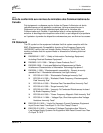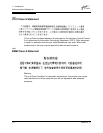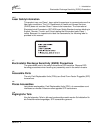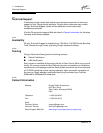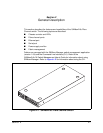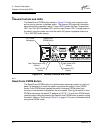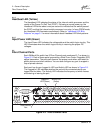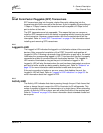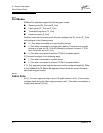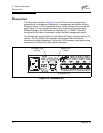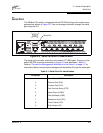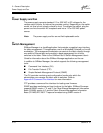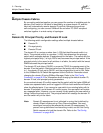
2 – General Description
Fibre Channel Ports
59042-01 A 2-5
2.2.1
Small Form-Factor Pluggable (SFP) Transceivers
SFP transceivers plug into the ports; duplex fiber optic cables plug into the
transceivers which then connect to the devices. A port is capable of transmitting at
1 Gbps or 2 Gbps; however, the transceiver must be capable of 2 Gbps for the
port to deliver at that rate.
The SFP transceivers are hot swappable. This means that you can remove or
install an SFP transceiver while the switch is operating without harming the switch
or the transceiver. However, communication with the connected device will be
interrupted. Refer to ”Install SFP Transceivers” on page 4-4 for information about
installing and removing SFP transceivers.
2.2.2
Logged-In LED
The Logged-in LED indicates the logged-in or initialization status of the connected
devices. After successful completion of the POST, the switch extinguishes all
Logged-In LEDs. Following a successful loop initialization or port log-in, the switch
illuminates the corresponding logged-in LED. This shows that the port is properly
connected and able to communicate with its attached devices. The Logged-In
LED remains illuminated as long as the port is initialized or logged-in. An
Logged-In LED will also illuminate when the port has been designated as a donor
port and its buffer credits are being used by another port. Refer to ”Distance” on
page 3-6 for more information about extended credits and donor ports.
If the port connection is broken or an error occurs that disables the port, the
Logged-In LED will flash. Refer to ”Logged-In LED Indications” on page 5-5 for
more information about the Logged-In LED.
2.2.3
Activity LED
The Activity LED indicates that data is passing through the port. Each frame that
enters or leaves the port causes this LED to illuminate for 50 milliseconds. This
makes it possible to observe the transmission of a single frame. When extending
credits, an Activity LED for a donor port will reflect the traffic of the recipient port.
Refer to ”Distance” on page 3-6 for more information about extended credits and
donor ports.



